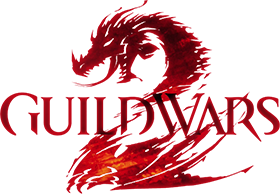Guild Wars 2: Examining the Combat System
The ZAM staff continues its in-depth coverage of the upcoming sequel by delving into the mechanics and reasoning behind the game's battle mechanics.
ZAM: That’s 10, correct?
Cartwright: Right, and five are based upon your weapon. What that allows us to do is look at the “pools” of skills that you’re drawing from and know that players are going to have certain types of skills always employed, whether that’s a weapon skill, a support skill, etc. We then have a much better idea of the number of builds that can be created, and now we feel that characters will have at least some weapon, some healing and some tools to use while they’re playing. Then it’s up to us to make all the weapon, tool and healing skills as cool as possible.
What would happen before is players could go out into the world with eight different tools on their bar. So then – as game designers – we’d have to reduce the bonuses from those tools because one guy is bringing all of them to bear in the battle at once. After that everyone else who goes to pick up one of those skills realizes that it’s very weak as a single skill because it was balanced to perform in a “max” sort of situation.
Generally, Guild Wars 2 became so much easier to balance simply from that one adjustment. 
ZAM: And it helps reduce the number of “bad builds” out there, right?
Cartwright: Right. We know the number of combinations, and we know it’s still large, but we can make each skill a player brings to the battle with him very powerful. Thus we have fewer combinations overall, but what we do have is that much bigger and better in the long run.
When I used to balance high level combat, I’d have to run through 100 different viable builds with 40 of those being the best-of-the-best, and that was out of 500 different builds in total. With this system, I expect to have a lot more possible builds that players can actually use, which makes it a larger group, but it’s much easier to balance overall.
Speaking about combos in particular, we want to be able to have the sort of “three guys shoot into a firewall to create a supernova!” sort of experience, but we don’t want to take that so far that we end up having the same sort of problems that we had in Guild Wars 1. The way we approached it was to look at all the skills and find the most visceral sort of combos that we could come up with.
Of course, we’re still playing around with everything, so things could change and adjust. It’s really all about how the entire system works when we’re actually in the game – how it feels and whether it’s fun.
Jon Peters: The skills in the first game were also much more complicated because we spent so much time on each skill before we even implemented it. We had to say exactly what it was going to do so the coders could actually make the skill work.
This time the skills are a lot simpler and they all come from this subset of tools. So, for example, you could have a bowshot that shoots a flaming arrow. But someone else could shoot their regular arrow through a flaming wall, and it then receives the flaming arrow properties. It’s not like we are suddenly generating a new tool by having this combo out there. We already have fire arrows, normal arrows, and fire walls.
ZAM: Basically you could save space if you wanted.
Peters: Right. So you don’t have to have everyone in your group have fire arrows, because all you need is an elementalist that can drop a flame wall down for you. Our combos aren’t doing many things that weren’t already in the game, it’s just giving you an additional way to do them.
Cartwright: The other thing we’re trying to push for is this idea of actually playing together. When you go up to a person in the game for the first time, there should be a fun way for the two of you to interact together. So when an elementalist comes to a party, he can throw a fire wall down, and that’s the sort of feeling we’re trying to get people to interact together.




